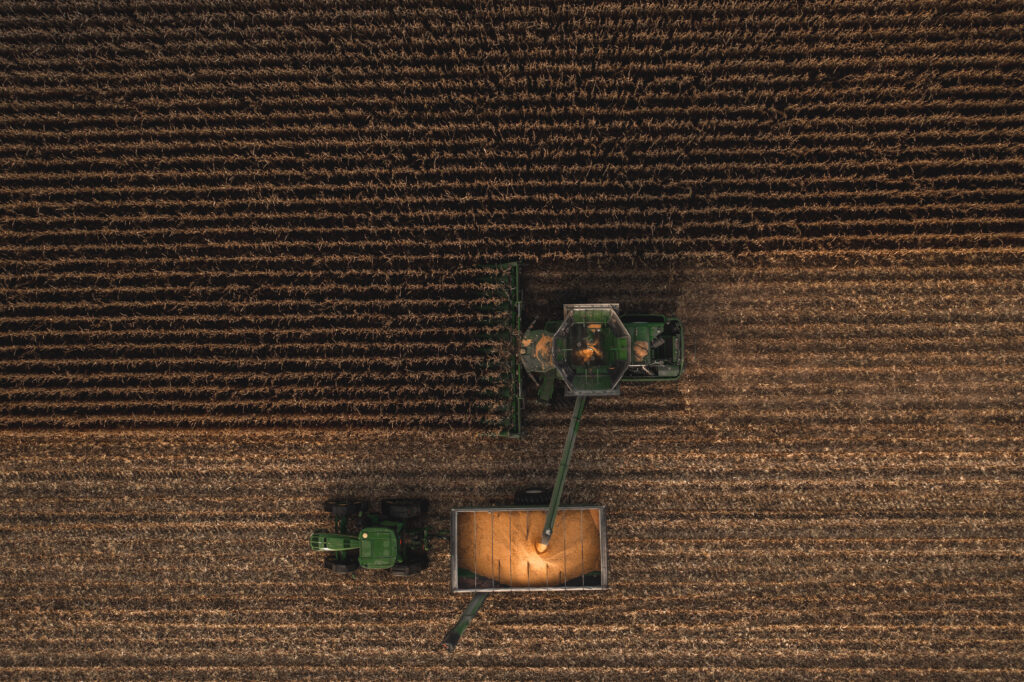The increase of greenhouse gases, including carbon dioxide, methane, ozone, and nitrous oxide emitted from agriculture and industry, is one of the biggest threats of our time.
Conventional agriculture is a contributor to greenhouse gas (GHG) emissions. But hope is not lost—regenerative farming techniques such as no-till, cover crops, diversified crop rotation, and decreased fertilizer input usage can actually reduce or sequester GHGs like carbon dioxide in the soil where they belong.
That’s why Gevo is all in on regenerative agriculture—we’re not only preventing GHG emissions with our bio-based renewable fuel, but we’re capturing GHGs in the soil to reverse our impact.
How Soil Accelerates Carbon Sequestration

All plants naturally take carbon dioxide from the atmosphere and transfer it to the soil through the process of photosynthesis. It’s how trees and other plants provide our atmosphere with oxygen. In farm fields, soil carbon also comes from plant matter like roots or crop residues (corn stalks, husks) that are left on the field.
With 38 percent of the global land surface taken up by agriculture, we need to incorporate regenerative agriculture and soil health practices when we raise our field crops to increase carbon storage within the soil ecosystem. Here’s how photosynthesis puts carbon into the soil:
- Plants use the energy from the sun to produce sugars from water and atmospheric carbon dioxide.
- Plants use these sugars as energy to support the growth of roots, which adds to carbon to the soil.
- Some of those sugars move through the plant’s roots to the soil as exudates, feeding microorganisms and fungi in the soil.
- Those soil organisms convert soil minerals into plant-available nutrients, which is food for the crop. During this process, the sugars are transformed into more stable materials that contain carbon.
Plants complete this process naturally—however, conventional agricultural practices like overuse of herbicides and fungicides, monocropping, or tillage can upset the delicate balance of the microecosystem responsible for locking carbon in the soil system. That’s where regenerative agriculture comes in.
Regenerative Agriculture Improves Carbon Sequestration
By prioritizing the health of the soil and the holistic systems of the natural world, regenerative agriculture has the potential not only to reduce carbon emissions, but to reverse them.
Carbon sequestration in soils is a function of photosynthesis. Soils have a diverse ecosystem where organisms such as bacteria or fungi play a major role in carbon sequestration, however, when the soil is continually disturbed through tillage, the microorganisms are impacted and their efficiency is impacted.
Regenerative agriculture continually protects, replenishes, and improves the soil in which crops are grown. Some of the regenerative practices that improve carbon sequestration are:
- Crop rotations
- Cover crops
- Retaining crop residues
- Utilizing manure, compost, and other natural fertilizers
- Integrated livestock management and rotational grazing
- Reducing tillage
- Reducing or eliminating synthetic chemicals that harm soil microörganisms
A healthy soil ecosystem means more resilient plants, higher organic matter, reduced soil erosion, and improved yields—but it also means less carbon dioxide in the atmosphere, and that’s a win all around.
Carbon Sequestration: The Bottom Line
Being climate-smart means more than reducing our dependence on fossil fuels. While Gevo’s bio-based renewable fuel is a climate-friendly alternative to traditional aviation fuel, we’re not stopping there.
Regenerative agriculture is one of the largest opportunities we have as a planet to remove carbon dioxide from our atmosphere and capture it underground. It just so happens that regenerative farming is a win-win, growing healthy and abundant crops that have a variety of uses, while reducing our climate impact.
By integrating regenerative agriculture practices into our supply chain, as well as supporting a positive feedback loop that captures greenhouse gasses, Gevo is building a climate-friendly fuel future from the ground up.
